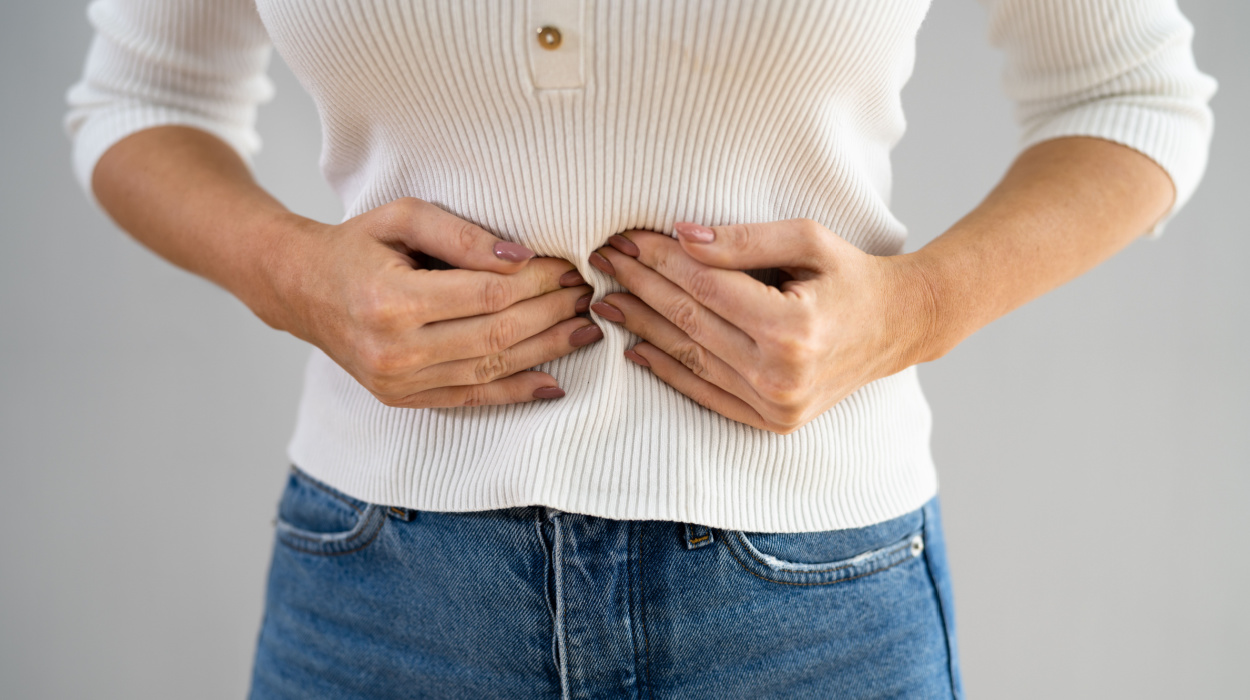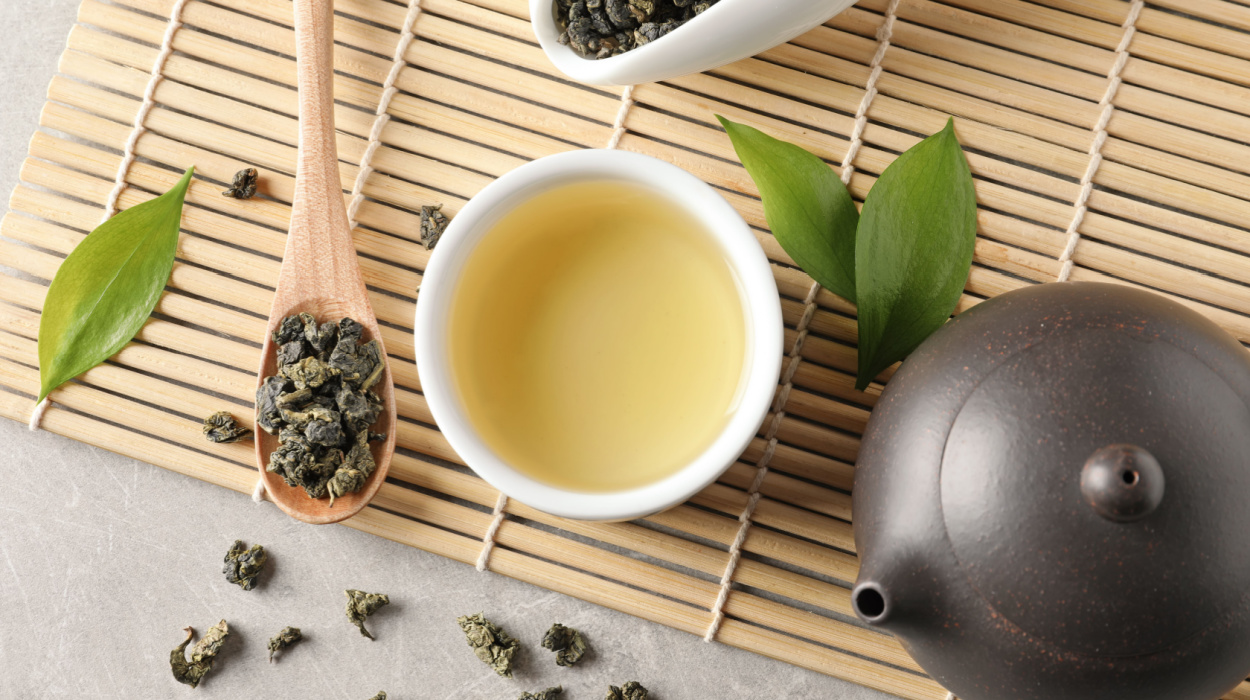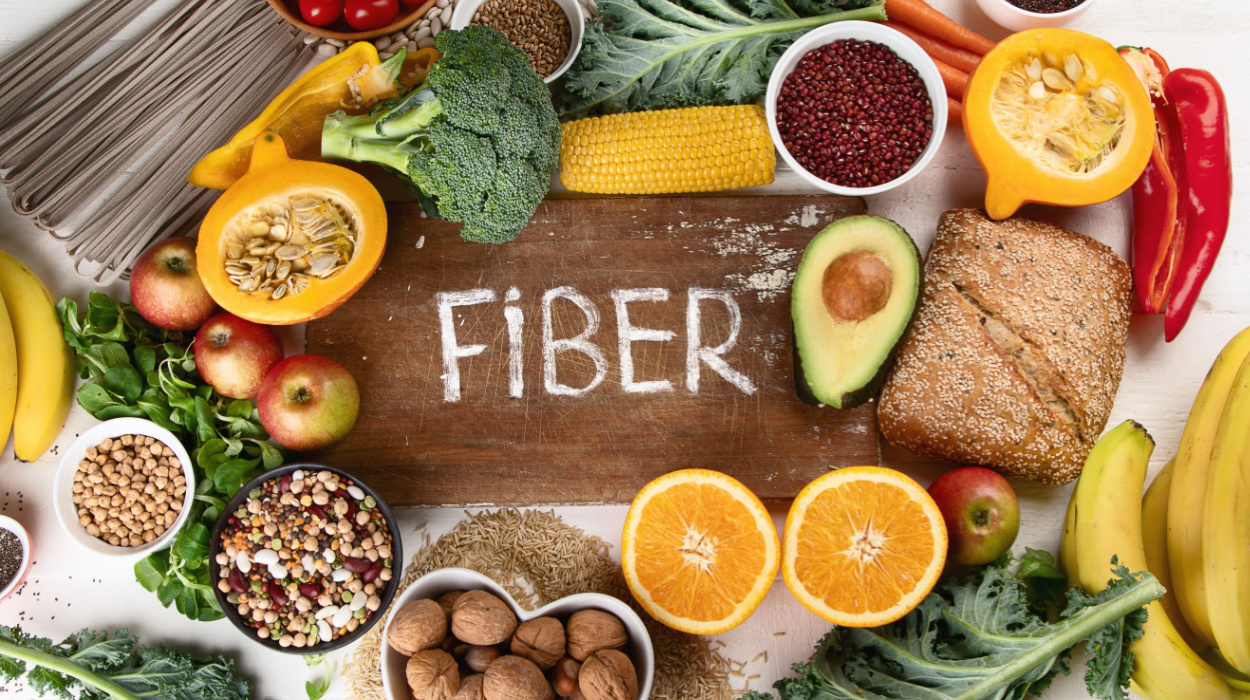 Expert's opinion
Expert's opinion
Expert's opinion
The article is a subjective view on this topic written by writers specializing in medical writing.
It may reflect on a personal journey surrounding struggles with an illness or medical condition, involve product comparisons, diet considerations, or other health-related opinions.
Although the view is entirely that of the writer, it is based on academic experiences and scientific research they have conducted; it is fact-checked by a team of degreed medical experts, and validated by sources attached to the article.
The numbers in parenthesis (1,2,3) will take you to clickable links to related scientific papers.
Diverticulitis Diet: What To Add To Your Diet & What To Avoid 2024

Diverticulitis is when small pockets in the walls of the large intestines, otherwise known as the colon, become infected. It affects those with diverticulosis or diverticular disease, a chronic, usually symptomless, disease where small pockets called diverticula form in your intestines.
If you have diverticulitis, you’ll need to follow a specific low-fiber diet plan to ease your digestive symptoms and feel better. Once your diverticulitis symptoms have subsided, you should gradually re-introduce more high-fiber foods to treat the diverticulosis and keep the diverticula from becoming inflamed or infected.
Read on to find out which certain foods you can eat on a diverticulitis diet plan and which to avoid to overcome your symptoms as quickly as possible
Sample Diet For Diverticulitis: Sample Diverticulitis Diet Plan For One Day
Sample Diverticulitis Diet Meal Plan
Here is a one-day sample menu for a diverticulitis flare-up. This is a sample menu adapted from the NCM manual, 2022.
Breakfast: Banana Cereal Delight (Approx. 230 Calories)
This nutritious breakfast offers a comforting start to your day while adhering to the diverticulitis diet. Cream of Cheerios cereal provides a smooth texture that’s easy on the digestive system. Paired with a ripe banana, it offers essential vitamins and minerals. A cup of fortified plant-based milk not only adds creaminess but also provides vital nutrients like vitamin D, B12, and calcium, which are crucial for bone health.
| Breakfast | |
| Cream of Cheerios cereal | Half a cup |
| Ripe banana | One small |
| Plant-based (i.e. almond) milk fortified | One cup |
Snack: Probiotic Yogurt Boost (Approx. 100 Calories)
Your mid-morning snack plays a vital role in maintaining gut health. A serving of soy-based or low-fat yogurt with active probiotic cultures helps support a balanced digestive system. Probiotics promote the growth of beneficial bacteria, aiding in digestion and reducing inflammation. Enjoy it with a cup of decaffeinated tea or coffee for added comfort.
| Snack | |
| Smooth yogurt made from soy or low-fat Activia* yogurt with active probiotic cultures without nuts or fruit | Eight ounces |
| Decaffeinated tea or coffee | One cup |
Lunch: Light Tomato And Turkey Combo (Approx. 300 Calories)
Lunchtime calls for a gentle yet flavorful meal. A bowl of low-fiber tomato soup provides a soothing base, while cooked string beans add a touch of fiber without overloading the digestive tract. The half sandwich, made with white bread, a slice of turkey, and vegan mayonnaise, is easy to digest while still offering a satisfying taste. A cup of rehydration drink keeps you well-hydrated.
| Lunch | |
| Tomato soup | Half a cup |
| Cooked string beans | A quarter cup |
| Sandwich made with white bread | Half of a sandwich |
| Vegan mayonnaise | One tablespoon |
| Slice turkey | One |
| Rehydration drink | One cup |
Afternoon Snack: Cracker Protein Mix (Approx. 200 Calories)
Your body needs nourishment in the afternoon, and this snack delivers just that. A few saltine crackers provide a minimal amount of fiber, making them gentle on the stomach. Paired with a scoop of soy protein powder, you get a protein boost to help repair and regenerate tissues. Enjoy it with a cup of almond milk sweetened with fruit juice for added flavor and hydration.
| Afternoon Snack | |
| Saltine crackers | Four |
| Soy protein powder | One scoop |
| Almond milk sweetened with fruit juice | One cup |
Supper: Lean Chicken And Veggie Plate (Approx. 400 Calories)
Dinner is a balanced and nutritious affair with a well-cooked roasted chicken breast, free from skin. This lean protein source is easy to digest and offers essential amino acids for muscle health. Mashed potatoes provide comfort, while well-cooked carrots add fiber without irritation. A cup of decaffeinated coffee rounds off the meal on a soothing note.
| Supper | |
| Lean well-cooked roasted chicken breast without skin | Three to four ounces |
| Mashed potatoes | A quarter cup |
| Olive oil | Two tablespoons |
| Well-cooked carrots | A quarter cup |
| Decaffeinated coffee | One cup |
Snack: Applesauce Refresher (Approx. 50 Calories)
Before bedtime, indulge in a snack that’s both gentle and satisfying. Applesauce, prepared without added sugars or spices, offers a touch of sweetness and a small amount of dietary fiber. Paired with a cup of rehydration drink, it helps maintain hydration levels while keeping nighttime hunger at bay.
| Snack | |
| Applesauce | Half a cup |
| Rehydration drink | One cup |
These meals are carefully designed to promote digestive comfort and provide essential nutrients, making them ideal choices for individuals following the diverticulitis diet.
What Is A Diverticulitis Diet?
If you have diverticulitis, you’ll need to follow a very low-fiber diet containing only 13 grams of fiber per day to give your digestive system a rest and ease the symptoms. Your healthcare provider might even recommend following a liquid diet for a few days during a diverticulitis flare-up.
However, the diverticulitis diet isn’t recommended long-term because you need fiber for a healthy gut microbiota and digestive system. Studies show that those with diverticulitis have a different gut microbiome composition[1] and that you’re more likely to get diverticulitis if you don’t eat enough fiber.[2]
In the long term, diverticulitis shouldn’t be a problem if you follow a healthy, high-fiber diet outside of flare-ups. Adults should aim to have a dietary fiber intake of at least 30 grams of fiber per day to avoid developing diverticulitis. A digestive or fiber supplement can help improve gut health, too.
Diverticulitis Diet Benefits
Following the diverticulitis diet will help reduce the inflammation and ease the symptoms associated with diverticulitis,[3] such as
- Abdominal pain
- Nausea
- Fever
- Diarrhea or constipation
- Blood in your stool
What To Eat With Diverticulitis Flare-Up
According to the Nutrition Care Manual[4] published by The Academy of Nutrition and Dietetics, during a diverticulitis flare-up, you should aim to eat only 13 grams of fiber a day.
In cases of acute colonic diverticulitis, your doctor may order a clear liquid diet progressing slowly to the low-fiber diet until symptoms resolve.
Clear Liquid Diet

At first, you might have to follow a clear liquid diet to ease the infection. This type of diet means only consuming
- Water
- Clear soup or broth
- Tea or coffee without milk, sweeteners, or creamers
- Electrolyte drinks
- Jell-O
- Popsicles
Once your symptoms have eased, your doctor might tell you to start introducing low-fiber foods. Keep in mind that this diet is deficient in most nutrients and is meant to be used short-term only until symptoms resolve.
White Carbohydrates
Eat white, refined carbohydrates such as white bread, white pasta, and white rice. Avoid whole grain varieties and seeded bread.
Pureed Or Processed Fruits And Juices
Avoid whole fruits and eat only fruits where the bulk of the fiber has been removed, such as canned or cooked fruits in their own juice or light syrup, fruit purees, and fruit juices without pulp. Avoid prunes, pineapples, and prune juice along with canned fruits in heavy syrup.
Once acute diverticulitis has eased, you should aim to eat whole, unprocessed fruit daily. Studies show that fruit fiber is protective of diverticulitis[5] – even more than vegetable fiber.
Poultry, Fish, And Eggs
Red and processed meat[5] are linked to a higher risk of diverticulitis. However, cooked white meat[6] without skin, such as chicken or turkey, isn’t linked to an increased risk and is considered safe during a diverticulitis flare-up as it’s very low in fiber.
Eating more fish might even be associated with a reduced risk of acute diverticulitis,[6] although other variables might confound this effect.
Fats And Dairy
You should avoid overdoing high-fat foods and whole-fat dairy containing lactose. Some oils, such as olive and canola, are safe to consume when you have diverticulitis. Olive and canola oils have anti-inflammatory properties,[7] which might help reduce inflammation.
If cooking with olive oil, choose an extra-virgin olive oil from a Destination of Protected Origin, or DPO, as they tend to have higher levels of health-promoting anti-inflammatory antioxidants.[7] Limit oils to less than eight teaspoons per day.
Dairy should be limited to low-fat versions that are lactose-free or dairy treated with lactase, an enzyme that breaks down lactose and can be taken with lactose-containing foods or put in milk to break down the lactose. Low-fat versions of cheeses like “reduced-fat” Swiss and “reduced-fat” cheddar and parmesan are acceptable as some cheeses are low in lactose.
Some Cooked Vegetables
Some well-cooked vegetables without skins or seeds are classed as low-fiber foods and can be eaten if you have diverticulitis, such as
- Zucchini
- Yellow squash
- Pumpkin
- Carrots
- Potatoes without skin
- Strained vegetable juice
Beverages
Consume eight to ten cups of fluid per day as water, non-caffeinated drinks, and rehydration drinks to balance out your electrolytes.
Avoid beverages sweetened with sorbitol or other artificial sweeteners, and limit beverages containing high-fructose corn syrup to 12 ounces daily.
Foods To Avoid With Diverticulitis
There are specific foods to avoid during a diverticulitis symptom flare-up:
High-Fiber Foods

Fiber adds bulk to your stool, which can be painful when you have diverticulitis. So those with diverticulitis should avoid eating fiber-rich foods during symptom flare-ups, such as
- Beans and pulses (i.e., chickpeas, navy beans, and lentils).
- Whole grains (i.e., whole wheat, quinoa, brown rice, whole grain bread, etc.).
- Most fruits and vegetables (only eat allowed foods and count the grams of fiber).
- Nuts and seeds – especially small seeds such as sesame and flaxseed.
However, research suggests that a long-term low-fiber diet can increase the risk of developing diverticulitis,[8] so you should avoid following a low-fiber diet for extended periods – only during symptom flare-ups. For diverticulosis, you should eat a high-fiber diet of about 30 grams of fiber per day.
High-Fat Foods
Avoid fried meat of all kinds, luncheon meat, sausage and bacon, and hot dogs. Avoid crunchy nut butter, but it may be creamy in limited quantities. Avoid coconut meat and oils. Also, avoid whole-fat milk, half-and-half cream, sour cream, ice cream, and fried vegetables.
Processed And Red Meat
Eating red or processed meat is linked to a higher risk of developing diverticulitis[2] (as well as heart disease, cancer, diabetes, and other diseases). Studies suggest that regularly eating beef, lamb, pork, or hamburgers[6] is especially associated with a higher risk of diverticulitis.
Vegetables
Avoid spinach, beets, broccoli, cauliflower, brussels sprouts, cabbage, collard, mustard and turnip greens, corn, dried beans, kale, lima beans, mushrooms, okra, and onions.
Sugary Foods
Studies show that eating foods high in sugar can increase the risk of diverticulitis, so it’s best to avoid eating these foods, even while not in a symptom flare-up. This sugar restriction includes honey and all artificial sweeteners.
Alcohol
No alcoholic drinks are allowed as their consumption is linked to an increased risk of diverticular bleeding.[5]
High-FODMAP Foods
Although the NCM doesn’t recommend reducing high-FODMAP foods, some studies suggest that a low-FODMAP diet might help some people with diverticulitis.
FODMAPs are specific types of carbohydrates: Fermentable Oligosaccharides, Disaccharides, Monosaccharides, and Polyols. Some people find these types of carbohydrates difficult to digest, and some evidence suggests that a low-FODMAP diet might be useful for the long-term management of diverticular disease[9] to reduce the risk of diverticulitis.
A low-FODMAP diet[10] has also improved symptoms in those with digestive and kidney diseases such as irritable bowel syndrome, otherwise known as IBS. Further evidence suggests that IBS increases the risk of diverticular disease[11] in older age.
Some high-FODMAP foods you might want to avoid during a diverticulitis flare-up are typically foods normally restricted on a diverticulitis diet:
- Some fruits, such as apples and pears.
- Some vegetables, especially onions, garlic, and those in the brassica family, such as cabbage and Brussels sprouts.
- Fermented foods.
- Beans and pulses.
- Lactose-containing dairy (milk, high-lactose cheeses, etc.).The primary FODMAP in dairy is lactose.
- Soy-based foods.
How To Follow A Diverticulitis Diet
If you have symptoms of diverticulitis, you should see your doctor as soon as possible. They will rule out potentially fatal disease complications[12] and advise you on following a diverticulitis diet /based on your symptoms[3] and health history.
Once your symptoms have gone, your doctor will likely recommend introducing higher-fiber foods again. It’s best to do this slowly to avoid overwhelming your digestive system after taking a break from digesting fiber. You should aim to get back to eating at least 30 grams of fiber per day to reduce your risk of future diverticulitis flare-ups.
Maintaining a normal body mass index[13] is also important, as obesity is associated with diverticulitis development. Studies suggest that a healthy lifestyle[5] with regular exercise, no smoking, and minimal alcohol consumption reduces your risk of diverticulitis.
Supplementation
Most registered dietitians recommend that those who must follow a diverticulitis diet take a multivitamin and a supplement containing calcium and vitamin D. The two supplements should be taken at separate times of the day with food. This supplementation is to help boost the nutrient intake of a normal diet that is deficient in almost all of the macro- and micronutrients.
Conclusion
You should follow a diverticulitis diet low in fiber while having a diverticulitis flare-up. Some people might need to follow a clear liquid diet for the first days.
However, suppose you have diverticulosis but do not have a flare-up of diverticulitis. In that case, you should eat a high-fiber diet to reduce your risk of future infections, focusing on eating fruits, vegetables, whole grains, nuts, and seeds daily.
Always speak to your doctor if you think you have symptoms of diverticulitis, as they’ll be able to rule out disease complications and advise what’s best for you, depending on the severity of your symptoms.
+ 13 sources
Health Canal avoids using tertiary references. We have strict sourcing guidelines and rely on peer-reviewed studies, academic researches from medical associations and institutions. To ensure the accuracy of articles in Health Canal, you can read more about the editorial process here
- Strate, L.L. and Morris, A.M. (2019). Epidemiology, Pathophysiology, and Treatment of Diverticulitis. Gastroenterology, [online] 156(5), pp.1282-1298.e1. doi:10.1053/j.gastro.2018.12.033.
- LEMES, V.B., GALDINO, G.G., ROMÃO, P. and REIS, S.T. (2021). THE RELATION BETWEEN THE DIET AND THE DIVERTICULITIS PATHOPHYSIOLOGY: AN INTEGRATIVE REVIEW. Arquivos de Gastroenterologia, [online] 58(3), pp.394–398. doi:10.1590/s0004-2803.202100000-66.
- Swanson, S.M. and Strate, L.L. (2018). Acute Colonic Diverticulitis. Annals of Internal Medicine, [online] 168(9), pp.ITC65–ITC80. doi:10.7326/aitc201805010.
- Nutritioncaremanual.org. (2022). – Nutrition Care Manual. [online] Available at: https://www.nutritioncaremanual.org/.
- Carabotti, M., Falangone, F., Cuomo, R. and Annibale, B. (2021). Role of Dietary Habits in the Prevention of Diverticular Disease Complications: A Systematic Review. Nutrients, [online] 13(4), p.1288. doi:10.3390/nu13041288.
- Tursi, A. and Elisei, W. (2020). Colonic diverticulosis and diet: is it useful? Polish Archives of Internal Medicine. [online] doi:10.20452/pamw.15199.
- Galvano, F., La Fauci, L., Graziani, G., Ferracane, R., Masella, R., Di Giacomo, C., Scacco, A., D’Archivio, M., Vanella, L. and Galvano, G. (2007). Phenolic Compounds and Antioxidant Activity of Italian Extra Virgin Olive Oil Monti Iblei. Journal of Medicinal Food, [online] 10(4), pp.650–656. doi:10.1089/jmf.2007.409.
- Ma, W., Nguyen, L.H., Song, M., Jovani, M., Liu, P.-H., Cao, Y., Tam, I., Wu, K., Giovannucci, E.L., Strate, L.L. and Chan, A.T. (2019). Intake of Dietary Fiber, Fruits, and Vegetables and Risk of Diverticulitis. American Journal of Gastroenterology, [online] 114(9), pp.1531–1538. doi:10.14309/ajg.0000000000000363.
- Uno, Y. and Velkinburgh, J.C. van (2016). Logical hypothesis: Low FODMAP diet to prevent diverticulitis. World Journal of Gastrointestinal Pharmacology and Therapeutics, [online] 7(4), p.503. doi:10.4292/wjgpt.v7.i4.503.
- Lacy, B.E., Pimentel, M., Brenner, D.M., Chey, W.D., Keefer, L.A., Long, M.D. and Moshiree, B. (2020). ACG Clinical Guideline: Management of Irritable Bowel Syndrome. American Journal of Gastroenterology, [online] 116(1), pp.17–44. doi:10.14309/ajg.0000000000001036.
- Dreher, M.L. (2018). Dietary Patterns, Foods and Fiber in Irritable Bowel Syndrome and Diverticular Disease. Dietary Patterns and Whole Plant Foods in Aging and Disease, [online] pp.165–192. doi:10.1007/978-3-319-59180-3_6.
- Hawkins, A.T., Wise, P.E., Chan, T., Lee, J.T., Glyn, T., Wood, V., Eglinton, T., Frizelle, F., Khan, A., Hall, J., Ilyas, M.I.M., Michailidou, M., Nfonsam, V.N., Cowan, M.L., Williams, J., Steele, S.R., Alavi, K., Ellis, C.T., Collins, D. and Winter, D.C. (2020). Diverticulitis: An Update From the Age Old Paradigm. Current Problems in Surgery, [online] 57(10), p.100862. doi:10.1016/j.cpsurg.2020.100862.
- Peery, A.F., Shaukat, A. and Strate, L.L. (2021). AGA Clinical Practice Update on Medical Management of Colonic Diverticulitis: Expert Review. Gastroenterology, [online] 160(3), pp.906-911.e1. doi:10.1053/j.gastro.2020.09.059.



